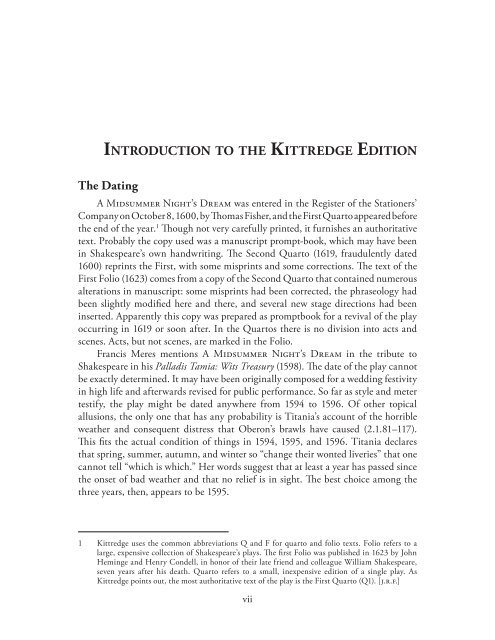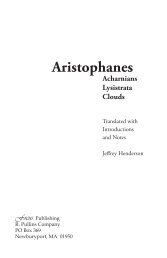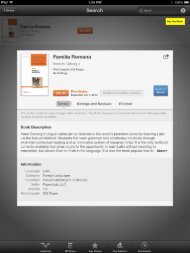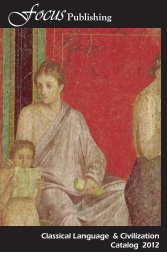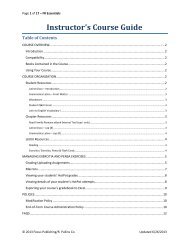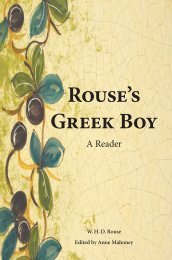William Shakespeare - Focus Publishing
William Shakespeare - Focus Publishing
William Shakespeare - Focus Publishing
You also want an ePaper? Increase the reach of your titles
YUMPU automatically turns print PDFs into web optimized ePapers that Google loves.
INTRODUCTION TO THE KITTREDGE EDITION<br />
The Dating<br />
A Midsummer Night’s Dream was entered in the Register of the Stationers’<br />
Company on October 8, 1600, by Thomas Fisher, and the First Quarto appeared before<br />
the end of the year. 1 Though not very carefully printed, it furnishes an authoritative<br />
text. Probably the copy used was a manuscript prompt-book, which may have been<br />
in <strong>Shakespeare</strong>’s own handwriting. The Second Quarto (1619, fraudulently dated<br />
1600) reprints the First, with some misprints and some corrections. The text of the<br />
First Folio (1623) comes from a copy of the Second Quarto that contained numerous<br />
alterations in manuscript: some misprints had been corrected, the phraseology had<br />
been slightly modified here and there, and several new stage directions had been<br />
inserted. Apparently this copy was prepared as promptbook for a revival of the play<br />
occurring in 1619 or soon after. In the Quartos there is no division into acts and<br />
scenes. Acts, but not scenes, are marked in the Folio.<br />
Francis Meres mentions A Midsummer Night’s Dream in the tribute to<br />
<strong>Shakespeare</strong> in his Palladis Tamia: Wits Treasury (1598). The date of the play cannot<br />
be exactly determined. It may have been originally composed for a wedding festivity<br />
in high life and afterwards revised for public performance. So far as style and meter<br />
testify, the play might be dated anywhere from 1594 to 1596. Of other topical<br />
allusions, the only one that has any probability is Titania’s account of the horrible<br />
weather and consequent distress that Oberon’s brawls have caused (2.1.81–117).<br />
This fits the actual condition of things in 1594, 1595, and 1596. Titania declares<br />
that spring, summer, autumn, and winter so “change their wonted liveries” that one<br />
cannot tell “which is which.” Her words suggest that at least a year has passed since<br />
the onset of bad weather and that no relief is in sight. The best choice among the<br />
three years, then, appears to be 1595.<br />
1 Kittredge uses the common abbreviations Q and F for quarto and folio texts. Folio refers to a<br />
large, expensive collection of <strong>Shakespeare</strong>’s plays. The first Folio was published in 1623 by John<br />
Heminge and Henry Condell, in honor of their late friend and colleague <strong>William</strong> <strong>Shakespeare</strong>,<br />
seven years after his death. Quarto refers to a small, inexpensive edition of a single play. As<br />
Kittredge points out, the most authoritative text of the play is the First Quarto (Q1). [j.r.f.]<br />
vii


